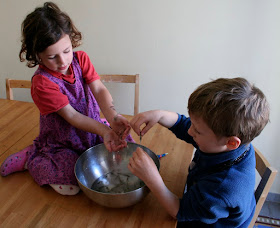My mother-in-law, Isabel, makes this dish of clams seasoned with paprika. (This is a standard way of cooking clams in Cadiz, and I imagine elsewhere in Spain, too). I’m not sure if she uses sherry or not – I shall have to ask her. If you don’t have a bottle of sherry to hand, just use some dry white wine instead.
 Ingredients
Ingredients
1 kg of clams, washed
6 cloves of garlic
2 teaspoons of sweet paprika
1 small glass of dry sherry (fino or manzanilla)
olive oil
salt
Method
Slice the garlic thinly, and heat it gently in a saucepan with plenty of olive oil. After a couple of minutes, add the paprika, stir well and continue to fry for 10 seconds or so, then add the clams, the sherry and a little salt. Cover the pan with a lid, bring to the boil, reduce to a simmer, and cook until all the clams have opened. Serve with plenty of good crusty bread, to dip into the sauce.










